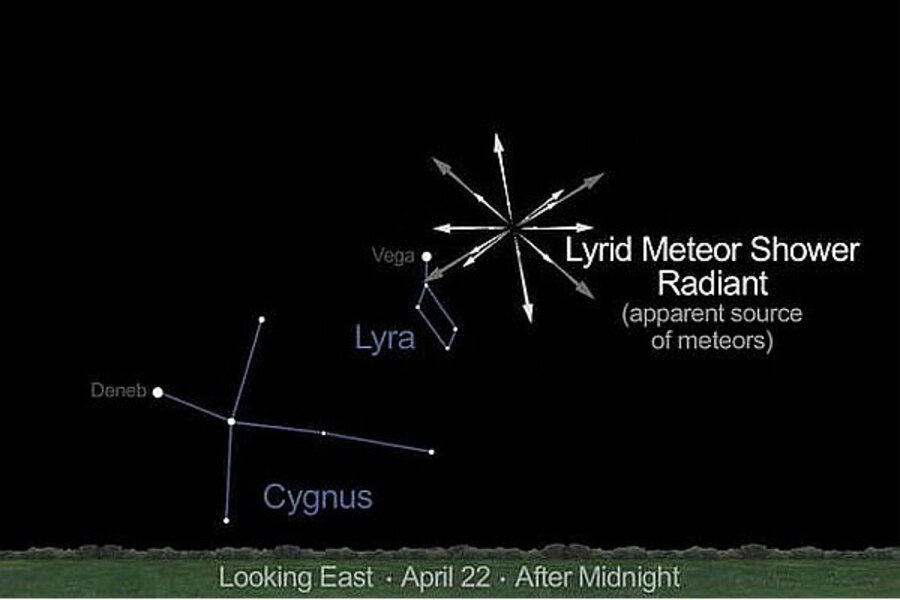Meteor shower webcast: Watch outside or onscreen
Loading...
The annual Lyrid meteor shower may have peaked overnight on Sunday and Monday, but if you missed the celestial fireworks show don't fret. NASA's got you covered.
Scientists at NASA's Marshall Space Flight Center (MSFC) in Huntsville, Ala., will broadcast live images of the Lyrid meteor shower tonight and early Tuesday (April 22 and 23) for stargazers stuck with bad weather or light-polluted night skies.
The NASA broadcast will begin at 8:30 p.m. EDT (0030 April 23) and run throughout the evening. You can watch the Lyrid meteor shower webcast on SPACE.com courtesy of NASA's MSFC feed.
"If you'd like to catch a last look at 2013 Lyrid meteor shower, this is your chance!" MSFC officials said in an announcement today. "Although a bright moon may interfere with viewing, you should still be able to see Lyrid meteors at an anticipated rate of 10-20 meteors per hour."
This year, the Lyrid meteor display runs from April 16 through April 26, though it peaked overnight on April 21 and 22. Because the moon is bright in the evening sky, the best time to look for the Lyrids is in the wee morning hours before dawn, after the moon has set but before the sun rises.
The Lyrid meteor shower occurs each year in mid-April when the Earth passes through a dusty lane of debris left over from Comet Thatcher, which is also known as C/1861 G1 Thatcher. The comet orbits the sun once every 415 years. The Lyrids are created when the comet's dust streaks through Earth's atmosphere at speeds of up to 110,000 mph (177,027 kph).
The Lyrids get their name because they appear to radiate out of the constellation Lyra. Humans have been observing the "shooting stars" display for more than 2,600 years, NASA scientists have said.
Editor's note: If you snap a great photo Lyrid meteor shower that you'd like to share for a possible story or image gallery, send photos, comments and your name and location to managing editor Tariq Malik at spacephotos@space.com.
Email Tariq Malik at tmalik@space.com or follow him @tariqjmalik and Google+. Follow us @Spacedotcom, Facebook and Google+. Original article on SPACE.com.
- Meteor Shower Quiz: How Well Do You Know 'Shooting Stars'?
- Comet Thatcher's Yearly Attack on Earth - Lyrid Meteor Shower | Video
- How Meteor Showers Work (Infographic)
Copyright 2013 SPACE.com, a TechMediaNetwork company. All rights reserved. This material may not be published, broadcast, rewritten or redistributed.







